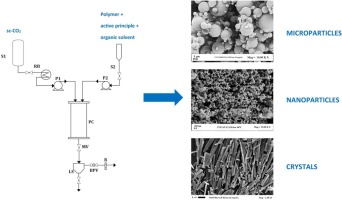- Home
- Blog
- News
- Basics
- Sources
- Agencies, Regulatory & Organisations
- CERSI Excipients Browser
- Excipient Report
- Excipient DMF List
- EXCiPACT Certified Companies
- Excipient Documentation
- Excipient EINECS Numbers
- Excipient E-Numbers
- FDA Inactive Ingredient List
- FDA GRAS Substances (SCOGS) Database
- IPEC Americas
- USP - U.S. Pharmacopeia
- Definitions
- Whitepapers / Publications
- Supplier
- Services
- Media
- Events
- 1st pharmaexcipients Poster Award
- Event Calendar
- Events featured by pharma-excipients
- 4th Annual Formulation & Drug Delivery Congress
- DDF Summit
- ExcipientFest Americas
- ExcipientFest Asia
- Global CompliancePanel
- International Conference and Exhibition on Pharmaceutics & Novel Drug Delivery Systems
- Formulation & Drug Delivery USA Congress
- Laboratory Medicine 2018
- Making Pharmaceuticals Europe
- Making Pharmaceuticals Exhibition
- Pharma Integrates
- PharmaExcipients China @CPhI China
- TTC Technology Training Center
- Jobs
- Online Sourcing
- Contact
07. May 2018
Supercritical antisolvent precipitation (SAS) has been successfully used to produce microparticles and nanoparticles of controlled size and distribution either as a single precipitates or by coprecipitation of two or more compounds. SAS coprecipitation process has produced different particles morphologies and, differently from the single compound SAS precipitation, process mechanisms involved have never been elucidated and the effectiveness of the technique has been verified only in some cases....
06. November 2017
The aim of this study was to improve the pharmaceutical properties of theobromine (TB), particularly its flowability and dissolution rate, by preparing solid dispersions using different technologies (hot melt extrusion—HME, freeze-drying—FD, and supercritical fluid—SF) as well as testing different hydrophilic polymeric matrixes (Eudragit™ E, Plasdone™ S and Soluplus™)
02. April 2017
Abstract Dissolution of bicalutamide processed with polyvinylpyrrolidone by either supercritical carbon dioxide or ball milling has been investigated. Various compositions as well as process parameters were used to obtain binary systems of the drug with the carrier. Thermal analysis and powder X-ray diffractometry confirmed amorphization of bicalutamide mechanically activated by ball milling and the decrease in crystallinity of the supercritical carbon dioxide-treated drug. Both methods led to...
22. March 2017
Abstract: Triterpene compounds like betulin, betulinic acid, erythrodiol, oleanolic acid and lupeol are known for many pharmacological effects. All these substances are found in the outer bark of birch. Apart from its pharmacological effects, birch bark extract can be used to stabilise semisolid systems. Normally, birch bark extract is produced for this purpose by extraction with organic solvents. Employing supercritical fluid technology, our aim was to develop a birch bark dry extract suitable...
20. March 2017
Abstract Rifampicin-loaded submicron-sized particles were prepared through supercritical anti-solvent process using ethyl cellulose as polymeric encapsulating excipient. Ethyl acetate and a mixture of ethyl acetate/dimethyl sulfoxide (70/30 and 85/15) were used as solvents for both drug and polymeric excipient. When ethyl acetate was used, rifampicin was crystallized separately without being embedded within the ethyl cellulose matrix while by using the ethyl acetate/dimethyl sulfoxide mixture,...
21. February 2017
Abstract In order to improve the encapsulation process, a newly supercritical antisolvent process was developed to encapsulate fish oil using hydroxypropyl methyl cellulose as a polymer. Three factors, namely, temperature, pressure, and feed emulsion rate were optimized using response surface methodology. The suitability of the model for predicting the optimum response value was evaluated at the conditions of temperature at 60°C, pressure at 150 bar, and feed rate at 1.36 mL/min. At the...
29. December 2016
Abstract A process to coat particles of active pharmaceutical ingredient (API) onto microcrystalline cellulose (MCC) excipient shows promise as a new way to dosage forms showing enhanced drug release. The process consists of a fluidized bed operated at elevated pressure in which API particles are precipitated from a Supercritical Anti-Solvent process (SAS). MCC particles were used as an excipient in the fluidized bed and collect the SAS-generated API particles. Naringin was selected as the...
17. November 2016
Abstract In this work, the supercritical assisted injection in a liquid antisolvent (SAILA) has been proposed as a new technique to produce composite microparticles for drug controlled release. Coprecipitation has been attempted for different non-steroidal anti-inflammatory drugs (Diclofenac, DF, Piroxicam, PX, and Indomethacin, ID) using poly-lactic-co-glycolic (PLGA) as the polymer matrix; acetone has been used as the liquid solvent and water as the liquid antisolvent. Coprecipitation was...
09. August 2016
Abstract This study involves the development of thin oral solvent cast films for the potential delivery of the proton pump inhibitor, omeprazole (OME) via the buccal mucosa for paediatric patients. OME containing films were prepared from ethanolic gels (1% w/w) of metolose (MET) with polyethylene glycol (PEG 400) (0.5% w/w) as plasticiser, and l-arg (0.2% w/w) as a stabilizer and dried in an oven at 40 °C. The blank and drug loaded films were divided into two groups, one group was subjected to...
08. August 2016
Abstract Supercritical antisolvent technology can precipitate polyvinylpyrrolidone (PVP) particles and crystallize paracetamol (PCM) crystals first separately and then together in the form of a solid dispersion. Supercritical carbon dioxide (scCO2) is used as an antisolvent. For PVP particle generation, ethanol, acetone, and mixtures of ethanol and acetone are used as solvents. The initial concentration of PVP in the solution was varied between 0.5 and 5 wt%, the operation pressure between 10...


